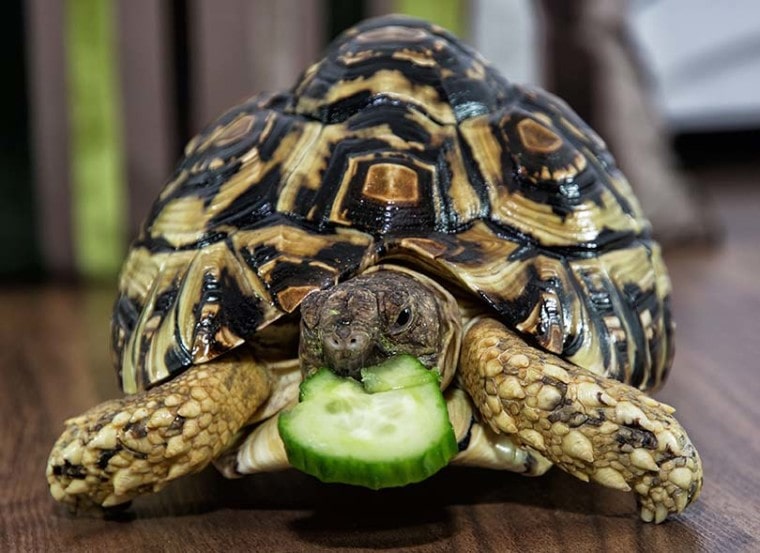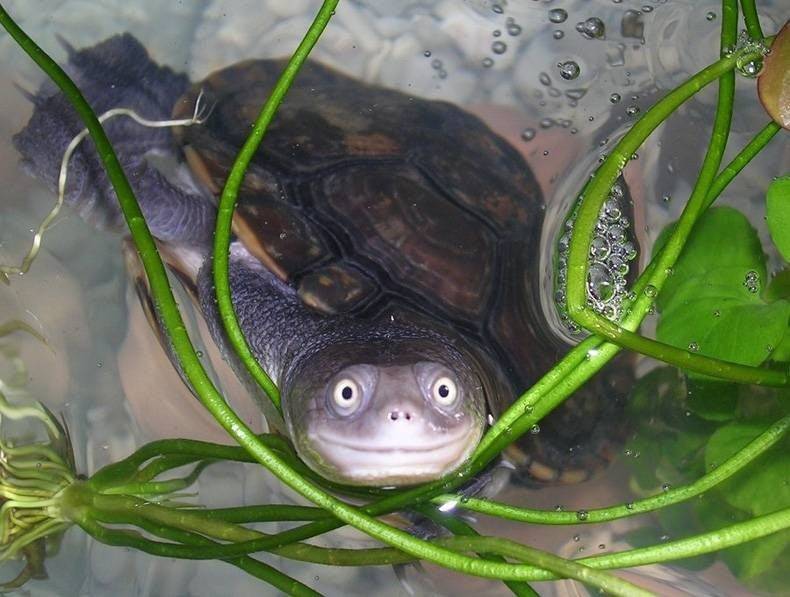How To Take Care Of A Turtle [Guide & Tips]
As a pet, turtles can live for decades and are low-maintenance, making them a popular choice. There are many different types of turtles and these reptiles come in a variety of shapes, sizes, and colors. Many people want to own a turtle, but might not know how to care for them properly. But there are still some things you need to know on how to take care of a turtle.
When choosing a pet turtle, it is important to do your research and select a species that is a good fit for your lifestyle and environment.
In this article, we’ll be discussing how to take care of a turtle. This includes everything from what to feed them, how to clean their tank, what kind of environment they need, and how to handle them properly.
Different Types Of Turtles

There are different types of turtles, and not all of them make good pets. Some turtles are very large and require a lot of space, while others are very small and delicate. Some turtles are also quite aggressive, and can bite or pinch if they feel threatened.
The best pet turtles are typically medium-sized, with a shell length of about 6-8 inches. They should be gentle and non-aggressive, and should have a healthy appetite. Red-eared sliders and box turtles make good pet turtles.
If you’re thinking about getting a turtle as a pet, do your research to find out which type of turtle is best suited for you and your home. There are many wonderful turtles that make great pets, and with the right care, they can live for many years.
How To Set Up A Turtle’s Habitat
A turtle’s habitat should be set up with their needs in mind. Their enclosure should be large enough for them to move around and exercise, and should include both land and water areas. The water should be shallow enough for them to easily get in and out, and should be kept clean. They will also need a basking spot where they can dry off and warm up. Be sure to include hiding places for your turtle to retreat to when they want some privacy.
Your turtle’s habitat should also include a filtration system to keep the water clean and free of waste. Be sure to change the water regularly and clean the enclosure as needed.
Turtles are wonderful creatures that can make great pets. They are relatively easy to care for, but there are a few things you need to do to set up their habitat correctly. With a little bit of effort, you can provide your turtle with a safe and comfortable home.
You Will Need The Following Items To Set Up A Turtle’s Habitat

- A glass or plastic aquarium that is at least 20 gallons in size
- A water filter
- A basking spot for your turtle to sun themselves
- A hiding spot for your turtle to feel secure
- Some rocks or logs for your turtle to climb on
- Turtle-safe plants (optional)
Follow These Steps To Set Up Your Turtle’s Habitat
- Choose an appropriate sized aquarium: A 20 gallon aquarium is a good size for one small turtle. If you plan on keeping multiple turtles, you will need a larger tank.
- Install a water filter in the aquarium: This is important to keep the water clean and free of harmful bacteria.
- Set up a basking spot for your turtle: This can be done by placing a rock or log in the sunshine near the edge of the aquarium. Your turtle will need to be able to climb out of the water onto this spot.
- Create a hiding spot for your turtle: This can be done by placing a rock or log on the opposite side of the aquarium from the basking spot.
- Plant some turtle-safe plants in the aquarium: This will provide your turtle with some hiding places and make their habitat more aesthetically pleasing.
- Fill the aquarium with clean fresh water: Be sure to dechlorinate the water before adding it to the tank.
Now you can place your turtle in their new home and watch them enjoy their new habitat!
What To Feed A Turtle
There are a variety of things that you can feed your turtle. You can give them pellets, vegetables, fruits, and even live food. It is important to mix up their diet so they get the nutrients they need. You can also supplement their diet with calcium powder to make sure they are getting enough of this important mineral.
A Good Diet For A Turtle

- One of the most important things you can do for your turtle is to feed it a well-rounded diet. A good diet for a turtle includes both vegetables and meat. Some of the best vegetables for a turtle diet are dark leafy greens like kale and collard greens. Other good options include carrots, squash, and sweet potatoes.
- As for meat, you can either feed your turtle live prey or frozen/thawed prey. Some good live prey options include crickets, earthworms, and minnows. Frozen/thawed prey options include pinkie mice and pinkie rats. You should also offer your turtle a calcium supplement to help with shell development.
- Dark, leafy greens like kale, spinach, and Swiss chard. Brightly colored fruits and vegetables like tomatoes, carrots, and squash lean protein sources like cooked chicken, fish, or turkey.
- You can either purchase commercial turtle food that contains all of the nutrients your turtle needs, or you can create your own meals using the above ingredients. It is important to chopped the food into small pieces so that your turtle can easily eat it. You should also offer your turtle fresh water to drink at all times.
How To Handle A Turtle

There are a few things to keep in mind when handling a turtle, they require some specific care. Here are a few tips on how to handle a turtle:
- Wash your hands thoroughly before and after handling your turtle. This helps prevent the spread of bacteria and disease.
- Never pick up a turtle by its tail, this can injure the turtle and cause its tail to fall off. Instead, pick it up gently from under its shell. When picking up a turtle, cup your hands around its shell and gently lift it up. Try to avoid touching its head or legs, as this can make the turtle feel threatened. If you need to hold the turtle for a longer period of time, you can support its underside with your other hand.
- Be careful when handling a turtle that is shedding its skin. The new skin is very delicate and can be easily damaged.
- Never handle a turtle that is eating. They may bite you if they feel threatened.
- Keep your turtle’s habitat clean and free of debris. A dirty environment can lead to health problems for your turtle.
- Handle your turtle sparingly. Too much handling can stress them out and cause them to become sick.

Common Health Problems In Turtles
While turtles are generally low-maintenance pets, they are still susceptible to a few health problems. Some of the most common health problems in turtles include respiratory infections, shell rot, and vitamin A deficiency:
Respiratory Infections
Respiratory infections are the most common type of illness in turtles and can be caused by a number of different bacteria. Symptoms include wheezing, lethargy, runny nose, and loss of appetite. If your turtle is showing any of these symptoms, take them to the vet immediately.
Shell Rot
Shell rot is another common problem in turtles and is usually caused by a bacterial or fungal infection. Shell rot can cause the shell to become soft and discolored and can eventually lead to death if left untreated. If you notice any signs of shell rot, take your turtle to the vet right away.
Vitamin A Deficiency
Vitamin A deficiency is another common health problem in turtles. Vitamin A is essential for proper growth and development, and a lack of it can cause shell deformities, respiratory problems, and eye problems. If you think your turtle may be deficient in vitamin A, talk to your vet about supplementation.
Turtles are also susceptible to a number of parasites, including ear mites, intestinal worms, and respiratory tract parasites. These parasites can cause a variety of health problems, so it’s important to have your turtle checked by a vet if you think they may be infected.
How To tell If A Turtle Is Happy & Healthy

Most people don’t realize that turtles can be great pets. They’re low maintenance, quiet, and can live a long time if properly cared for. But how do you know if your turtle is happy and healthy?
There are a few things to look for:
- Your turtle should have a smooth shell with no cracks or bumps. If you see anything unusual, it could be a sign of illness.
- Your turtle should be active and alert. If it’s sluggish or lethargic, something may be wrong.
- Healthy turtles eat regularly and have a good appetite. If your turtle isn’t eating or has lost its appetite, it could be sick.
- The color of your turtle’s skin and eyes should be bright and clear. If they’re dull or discolored, it could be a sign of illness.
If you notice any of these things, it’s important to take your turtle to the vet right away. With proper care, turtles can make great pets that will bring you years of enjoyment!
Conclusion
Taking care of a turtle can be a fun and rewarding experience. By following the tips in this article, you’ll learn on how to take care of a turtle, and you can be sure that it will have a long and healthy life. Remember to always consult with a veterinarian if you have any questions or concerns about your turtle’s health.
